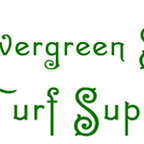Pros and Cons of Artificial Grass
Pros:
Low Maintenance: One of the primary advantages of artificial grass is its minimal maintenance requirements. No mowing, watering, or fertilizing is needed.
Year-Round Greenery: Artificial grass stays green and vibrant regardless of the weather, providing an attractive lawn year-round.
Water Conservation: It conserves water, making it an eco-friendly choice in regions with water shortages or strict watering regulations.
Durability: Artificial grass can withstand heavy foot traffic, making it ideal for high-use areas and sports fields.
Allergen-Free: It doesn’t produce pollen or harbor allergens like natural grass, making it a better option for allergy sufferers.
Pest-Free: Artificial grass doesn’t attract pests like insects or rodents, reducing the need for pesticides.
Cons:
Initial Cost: Installation can be expensive, including the cost of materials, labor, and preparing the ground.
Heat Retention: Artificial grass can become hot in direct sunlight, making it uncomfortable for barefoot walking during the summer.
Artificial Appearance: Some people prefer the look and feel of natural grass, finding artificial grass less appealing.
Environmental Impact: While it saves water, the production and disposal of artificial grass materials can have environmental consequences.
Limited Lifespan: Over time, artificial grass may wear out, lose its luster, or develop wrinkles.
Installation Challenges: Proper installation is critical; otherwise, the surface may become uneven or require frequent maintenance.
In summary, artificial grass offers convenience and environmental benefits but comes with an initial cost and may not appeal to those who prefer the natural look and feel of real grass. Consider your specific needs and preferences when deciding if artificial grass is right for you.
